When planning for a camping trip, one of the most important aspects to consider is your camping setup. Your campsite will serve as your home away from home, providing you with shelter, comfort and a place to relax after a day of outdoor adventures. In this document, we will discuss some creative camping setup ideas that will help make your camping experience more enjoyable and comfortable.
Definition of Camping Setup
Camping setup, also known as campsite organization, involves meticulously arranging and organizing camping equipment and gear. This encompasses essential items like tents, sleeping bags, cooking supplies, chairs, and any other necessary gear to ensure a comfortable and enjoyable camping experience. A well-thought-out camping setup not only enhances convenience but also contributes to the overall ambiance and functionality of your campsite, allowing you to fully immerse yourself in the wonders of the great outdoors. By carefully considering the placement and accessibility of each item, you can optimize your camping experience and create a cozy and functional home away from home amidst nature’s embrace.[2]

Importance of a Well-Organized Camping Setup
A well-organized camping setup is crucial for several reasons. First and foremost, it ensures that you have all the necessary equipment and supplies readily available when needed. This eliminates the hassle of constantly searching for items or realizing you forgot something essential at home. Imagine arriving at your campsite and effortlessly finding your tent, sleeping bags, cooking utensils, and other essentials neatly arranged and easily accessible. It sets the tone for a stress-free and enjoyable camping experience.
Moreover, a well-organized camping setup promotes safety by keeping hazardous items, such as cooking equipment and sharp objects, properly stored and secured. It reduces the risk of accidents and injuries, allowing you to fully enjoy your camping adventure without worry. Imagine having a designated area for your campfire, with firewood, matches, and fire extinguisher all within easy reach, ensuring a safe and cozy evening under the stars.
Lastly, a functional camping setup can significantly enhance the overall ambiance of your campsite, creating a cozy and inviting atmosphere for you to relax and unwind in. Imagine stringing fairy lights around your campsite, setting up comfortable seating areas with cushions and blankets, and arranging potted plants to add a touch of nature. These small details can make a big difference in creating a warm and welcoming environment where you can truly connect with nature and recharge your mind and body.[2]
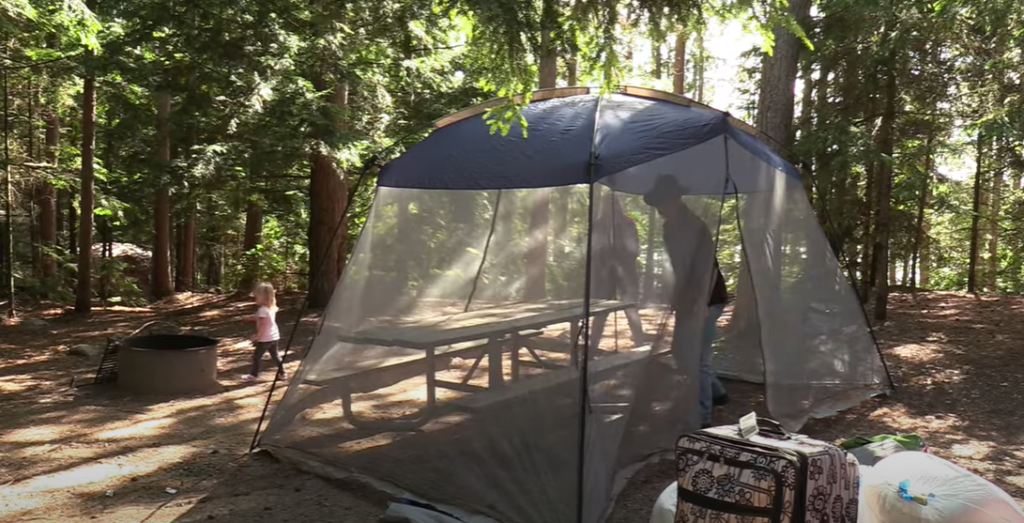
Choosing the Right Campsite
When it comes to setting up your camping site, choosing the right campsite is absolutely crucial for a successful outdoor adventure. Before you start pitching your tent and unpacking your gear, it’s essential to take a few moments to survey the area and carefully consider various factors that can greatly impact your camping experience.
First and foremost, pay attention to the terrain of the campsite. Look for a flat and even area that provides a stable foundation for your tent, ensuring a comfortable and restful night’s sleep. It’s also important to consider the ground’s natural drainage capabilities, as you wouldn’t want to wake up in a puddle if it rains during the night. Avoid low-lying areas that may flood and opt for higher ground or slightly elevated spots that promote better water runoff.
Another vital aspect to consider is shade. While camping during the summer months can be a delightful experience, the scorching sun can quickly turn your tent into a sauna. Look for a spot that offers natural shade, such as under the canopy of trees or near large rocks or boulders. This will not only provide a cooler and more comfortable environment during hot summer days but also protect you from harmful UV rays.
When choosing a campsite, it’s also important to consider privacy and noise levels. While some people enjoy the camaraderie of camping near other groups, others prefer a more secluded and tranquil experience. Take a look around and try to find a spot that offers the level of privacy you desire. Additionally, be mindful of areas with high foot traffic to avoid disturbances and maintain a peaceful atmosphere.
Lastly, proximity to facilities is worth considering. While many campers enjoy a rustic experience, having access to amenities like toilets and water sources can greatly enhance your camping trip. Look for a campsite that is conveniently located near these facilities to ensure convenience and ease during your stay.[2]
Essential Gear and Equipment
Now that you have chosen the perfect campsite, it’s time to start setting up your camping site. Here are some essential gear and equipment to include in your camping setup checklist:
- Tent: A good quality tent is an essential component of any camping setup. Consider factors like size, ease of set-up, and durability when choosing one.
- Sleeping gear: This includes sleeping bags, pillows, and camping mats or air mattresses. Don’t forget to also pack a repair kit in case of any tears or punctures.
- Cooking supplies: Depending on your preferences, this may include a portable stove, utensils, pots and pans, plates and cutlery, and cleaning supplies.
- Lighting: From flashlights to headlamps and lanterns, lighting is crucial for a safe and functional camping setup.
- Fire-starting supplies: These may include matches or lighters, firewood, kindling, and fire starters.
- First aid kit: Accidents can happen even in the great outdoors. It’s important to have a well-stocked first aid kit on hand for any minor injuries or emergencies.
- Navigation tools: These can include maps, compasses, and GPS devices to help you navigate your surroundings.[4]
Remember to carefully pack and organize your gear in designated areas within your campsite to ensure easy access and a clutter-free living space. With the right equipment and a well-organized camping setup, you’ll be ready for an enjoyable and stress-free outdoor adventure.
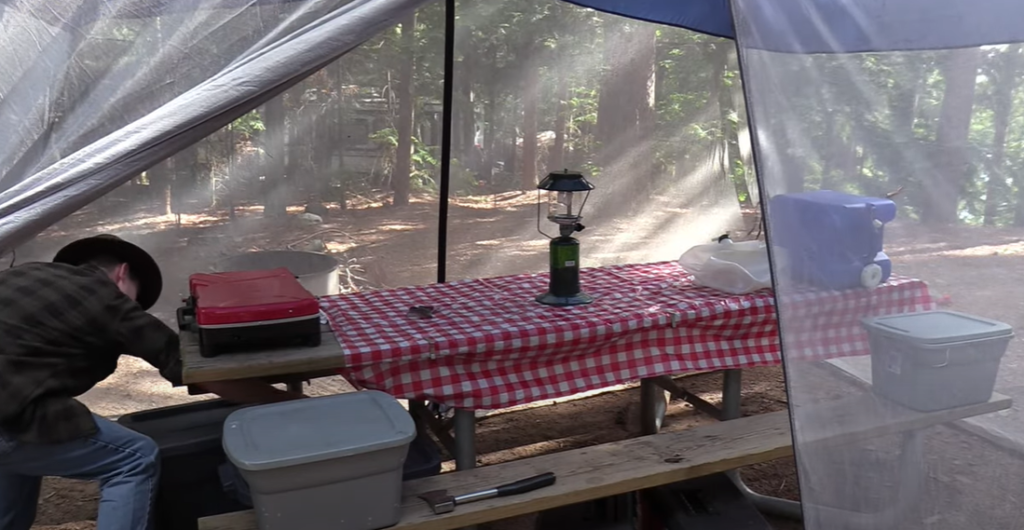
Organization and Storage
To create a functional and organized camping setup, here are some helpful tips to keep in mind:
- Utilize storage bins or containers: These can be used to store different categories of items, such as cooking supplies, food, and toiletries.
- Hang items on hooks or clotheslines: This is a great way to save space and keep essentials like towels and wet clothing off the ground.
- Use a foldable table or camp kitchen: This provides a designated area for food preparation and cooking, keeping your campsite clean and organized.
- Keep frequently used items within easy reach: Consider using pockets or hanging storage organizers to keep items like flashlights, water bottles, and bug spray readily accessible.
- Label containers and bins: This will help you quickly find what you need and keep everything organized.[4]
Don’t be afraid to get creative with your organization and storage solutions. With some planning and ingenuity, you can turn your camping site into a functional and clutter-free space for a more enjoyable outdoor experience.
Comfort and Safety Tips
In addition to creating a cozy and organized camping setup, here are some additional tips to keep in mind for comfort and safety:
- Invest in quality gear: From your tent to your sleeping bag and other essentials, investing in good quality gear will ensure a more comfortable and durable experience.
- Stay hydrated: It’s easy to get caught up in outdoor activities and forget to drink enough water. Make sure to stay hydrated throughout your camping trip.
- Protect yourself from the elements: Whether it’s sun protection or rain gear, make sure to pack appropriate clothing and equipment for different weather conditions.
- Keep a clean campsite: Not only is a clean campsite more enjoyable, but it also helps keep unwanted pests away and reduces potential safety hazards.
- Follow campsite rules and regulations: Be respectful of nature and follow all campsite rules and regulations to ensure a safe and enjoyable experience for everyone.[4]
By following these guidelines, you can create a comfortable, organized, and safe camping setup that will enhance your outdoor adventures. With proper planning and preparation, you’ll be well on your way to making unforgettable memories in the great outdoors.
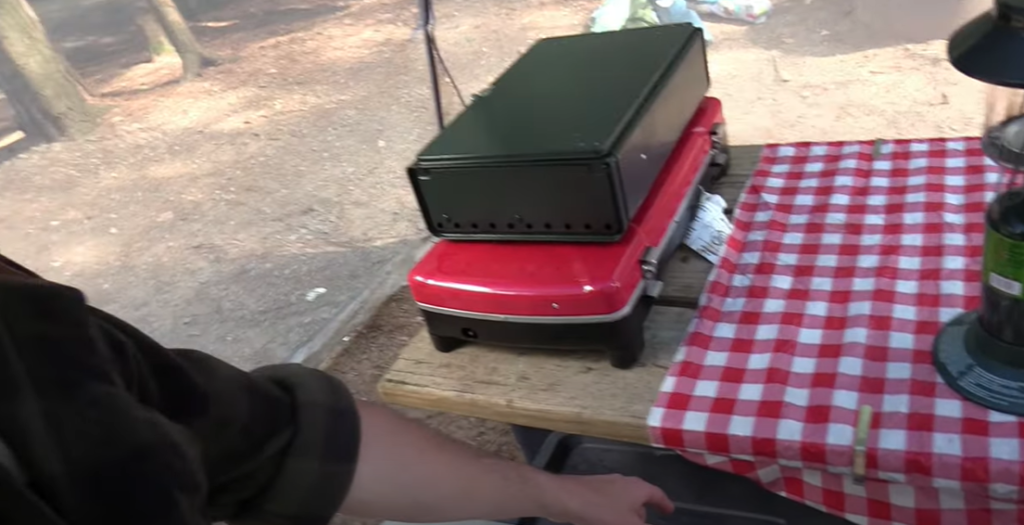
Campfire Setups and Safety
No camping experience is complete without a cozy campfire. Here are some important things to keep in mind when setting up and enjoying a campfire:
- Choose a designated fire pit or ring: Many campsites have designated areas for fires. If not, choose an open area away from trees, tents, and other flammable objects.
- Clear the area: Remove any debris or dry leaves from around the fire pit to reduce the risk of sparks and embers spreading.
- Use proper fire-starting techniques: Follow the campsite’s rules and use only approved fire-starting methods. Never start a fire with gasoline or other flammable liquids.
- Always have water nearby: Have a large bucket of water or a hose nearby in case of an emergency.
- Never leave a fire unattended: Always make sure someone is monitoring the fire, and extinguish it completely before leaving or going to bed.
- Respect wildlife and nature: Avoid burning anything other than firewood, as some materials may release toxic fumes. Also, be mindful of any wildlife in the area and avoid disrupting their habitats.[4]
DIY Camping Hacks
Looking to elevate your camping experience? Here are some creative DIY hacks and tips to try out on your next trip:
- When you find yourself in need of a lantern while camping, a clever hack is to use a headlamp placed inside a water jug. This makeshift lantern not only provides illumination but also helps to distribute the light more evenly, making it easier to navigate your surroundings.
- Planning to make pancakes on your camping trip? Consider prepping individual servings of pancake batter by placing the batter in plastic bags before you head out. This way, you can easily squeeze out the desired amount of batter for each pancake without the mess and hassle of measuring cups.
- Hygiene is important even when you’re in the great outdoors. Create a convenient portable hand-washing station by repurposing an old laundry detergent dispenser. Simply remove the detergent, replace it with water, and attach a spigot. Now you have a handy way to wash your hands wherever you are.
- Need a practical solution for storing spices while camping? Look no further than an empty Tic-Tac container. These small containers are perfect for storing and organizing spices, keeping them fresh and easily accessible for all your cooking needs during your outdoor adventures.
- Treat yourself to a delicious and hassle-free campfire dessert by making easy-to-eat campfire cones. Fill waffle cones with a delightful combination of marshmallows, chocolate chips, and other toppings of your choice. Wrap them in foil and place them on the fire, allowing the heat to melt the chocolate and create a gooey, mouthwatering treat. Enjoy the sweet goodness of campfire cones as you gather around the fire with friends and family.[1]
With these ingenious hacks, you can add some fun and convenience to your camping setup without breaking the bank. So go ahead and try them out on your next outdoor adventure!
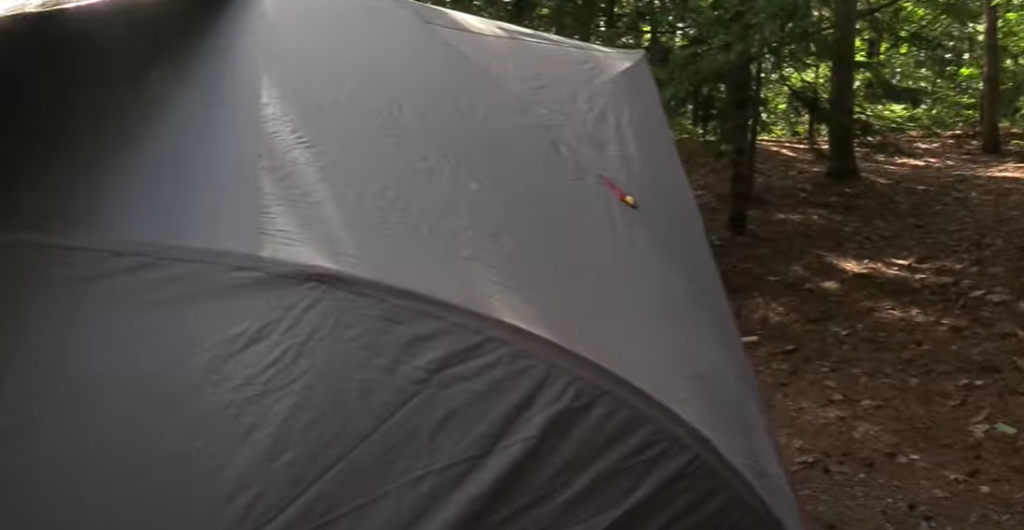
Technology in Camping
While camping is all about disconnecting from the hustle and bustle of daily life, technology can still play a valuable role in enhancing your camping experience. Here are some ways to incorporate technology into your next trip:
- Use GPS or navigation apps: These can be helpful tools for navigating hiking trails or finding your way back to camp.
- Bring a portable charger: Keep your phone or other devices charged for emergencies and capturing memories.
- Utilize camping apps: There are many apps available that can provide helpful information, such as weather updates, campsite reviews, and even tips for stargazing.
- Invest in solar-powered equipment: From lanterns to chargers, there are many solar-powered options for camping gear. This is a great way to reduce your environmental impact and ensure you have power even in remote locations.
- Capture memories with a camera: While it’s important to live in the moment, taking pictures can help preserve memories of your camping trip. Just remember to disconnect and enjoy nature as well.[1]
Incorporating technology into your camping setup can provide convenience and safety while still allowing you to connect with nature.
Meal Planning and Cooking Ideas
Food is a crucial aspect of any camping trip, and proper meal planning can make all the difference. Here are some tips and ideas for easy and delicious meals on your next camping adventure:
- Prepare some meals in advance: Prepping meals before you leave home can save time and effort at the campsite. Consider making freezer-friendly burritos, pasta dishes, or foil packet meals that you can simply heat up over the fire.
- Bring versatile ingredients: Choose ingredients that can be used in multiple dishes to save space and minimize waste. For example, bring tortillas for wraps, tacos, or quesadillas.
- Don’t forget snacks: Keep your energy up with protein bars, trail mix, and other healthy snacks. These are also great for on-the-go meals or picnics.
- Embrace the campfire for cooking: Cooking over an open flame can add a unique flavor to your meals. Try making foil packet dinners, chicken skewers, or even pizza cooked in a cast iron skillet over the fire.
- Keep it simple: Camping is about simplicity and enjoying nature, so don’t feel like you have to make gourmet meals. Stick to easy and tasty recipes using minimal ingredients.[3]
With these tips in mind, meal planning and cooking on your camping trip can be stress-free and delicious. Bon appétit!
Leave No Trace Principles
As outdoor enthusiasts, it is important to practice Leave No Trace principles to minimize our impact on the environment and preserve nature for future generations. Here are some guidelines to follow while camping:
- Plan ahead and prepare: Research the area you will be camping in and plan accordingly, including bringing proper gear and knowing any regulations or restrictions.
- Travel and camp on durable surfaces: Stick to designated campsites and avoid damaging vegetation or disturbing wildlife.
- Dispose of waste properly: Pack out all trash, including food scraps. Leave the campsite better than you found it by removing any litter you may come across.
- Leave what you find: Do not take anything from nature, such as rocks, plants, or other souvenirs. These items are meant to be enjoyed by all and play an important role in the ecosystem.
- Respect wildlife: Observe animals from a distance and do not feed or approach them. Be mindful of their habitats and avoid disrupting them.[3]
By following these Leave No Trace principles, we can ensure that the natural beauty of our camping destinations remains untouched for generations to come. Let’s all do our part to protect and preserve the great outdoors.
Weather Preparedness
Being prepared for various weather conditions is crucial for a successful and safe camping trip. Here are some key tips to keep in mind:
- Check the weather forecast before leaving: Make sure you know what to expect during your trip, including potential storms or extreme temperatures.
- Pack appropriate clothing: Be prepared for different weather scenarios by packing layers and waterproof gear.
- Bring extra supplies: In case of unexpected weather, it is important to have extra supplies such as blankets, tarps, or a waterproof tent.
- Know emergency protocols: Familiarize yourself with the appropriate actions to take in case of severe weather, such as seeking shelter or evacuating.[3]
By being aware and prepared for different weather conditions, you can ensure a safe and enjoyable camping experience.
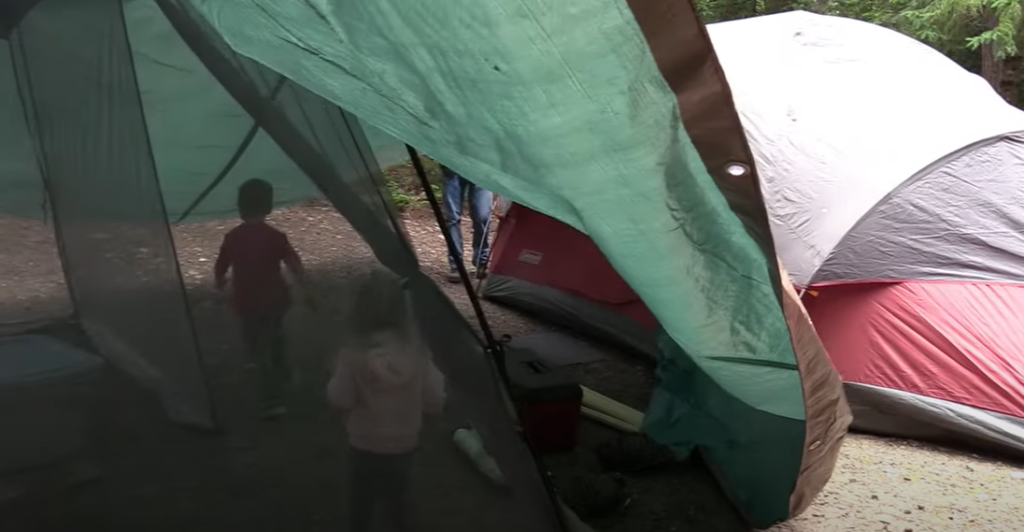
FAQ
What is a good place to set up a camp?
A good place to set up a camp is on level ground, away from any hazards such as cliffs or unstable terrain. Look for designated campsites or areas with flat surfaces and ample space for your tent and other gear.
How do I set up a camping trip?
To set up a camping trip, first determine the location and dates for your trip. Then research the area for any necessary permits or regulations. Next, create a packing list and gather all necessary gear and supplies. Finally, plan out activities and meals to make the most of your camping experience. Don’t forget to also consider safety measures and emergency protocols in case of unexpected situations. Follow these steps and you’ll be ready for a successful camping trip!
How do you organize camping?
Organizing for a camping trip involves planning and preparation. Start by choosing a location, setting dates, and researching any necessary permits or regulations. Next, create a packing list with all necessary gear and supplies, and make arrangements for transportation to the campsite. Organize your gear in labeled containers or bags for easy access at the campsite. Finally, plan out activities and meals to make the most of your camping experience. Don’t forget to also consider safety measures and emergency protocols in case of unexpected situations.
What is a camp layout?
A camp layout is the organization and arrangement of tents, gear, and other essentials at a campsite. This includes setting up tents in designated areas, organizing cooking and eating spaces, and designating a safe area for storing food and supplies. A well-planned camp layout can make for a more efficient and enjoyable camping experience. Don’t forget to also consider safety measures and emergency protocols in case of unexpected situations. Don’t forget to also consider safety measures and emergency protocols in case of unexpected situations.
What are the 3 C’s of camping?
The 3 C’s of camping stand for Care, Caution, and Common sense. These principles remind campers to take care of themselves and the environment, use caution in potentially dangerous situations, and use common sense when making decisions while camping. By following these guidelines, campers can ensure a safe and responsible trip while minimizing their impact on nature.
Useful Video: CAMPSITE SETUP | TENT CAMPING TIPS
Conclusion
Camping is a wonderful opportunity to disconnect from the hustle and bustle of everyday life and reconnect with nature. It allows us to appreciate the beauty of our surroundings, bond with loved ones, and create unforgettable memories. By following these tips and guidelines, you can ensure a successful, enjoyable, and responsible camping experience. So pack your gear, hit the trails, and enjoy the great outdoors! Just remember to leave no trace and always be prepared for whatever nature may throw your way. Happy camping! Don’t forget to also consider safety measures and emergency protocols in case of unexpected situations. Don’t forget to also consider safety measures and emergency protocols in case of unexpected situations.
References:
- https://settocamp.com/camping-setup/
- https://gonecampingagain.com/tent-camping-setup-ideas/
- https://daylifetravel.com/awesome-tent-camping-setup-ideas/
- https://cubcampers.com.au/8-creative-ideas-to-turn-camping-into-glamping/

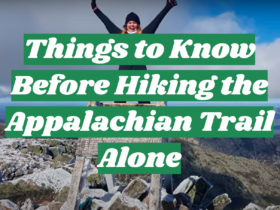
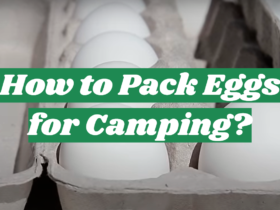
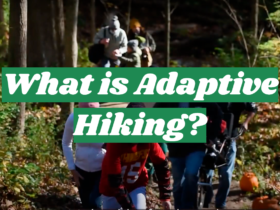
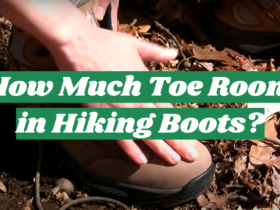
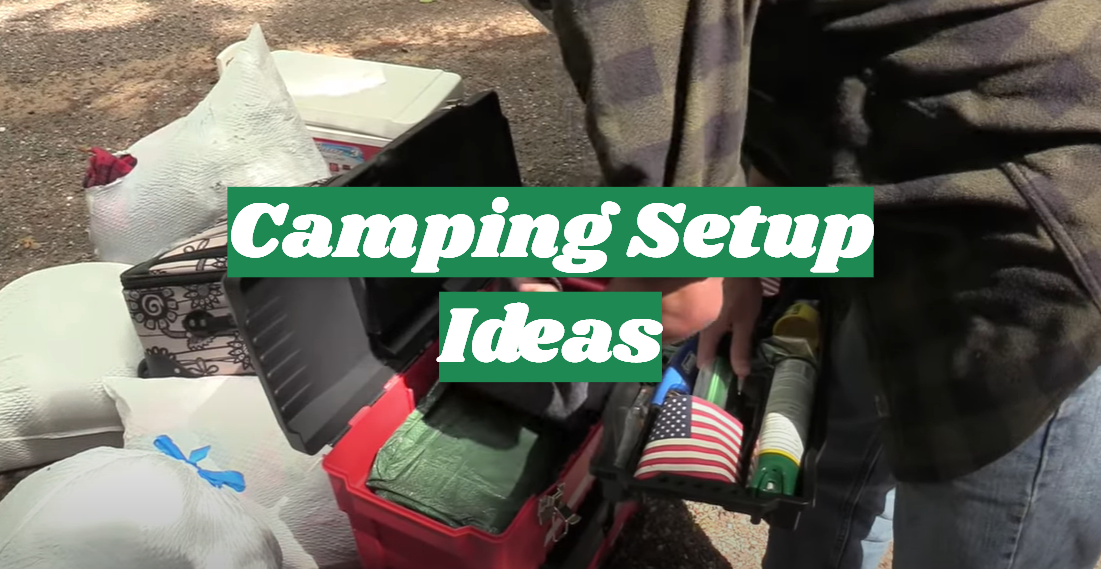
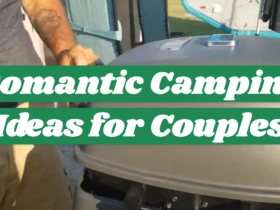
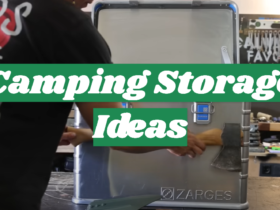
Leave a Review